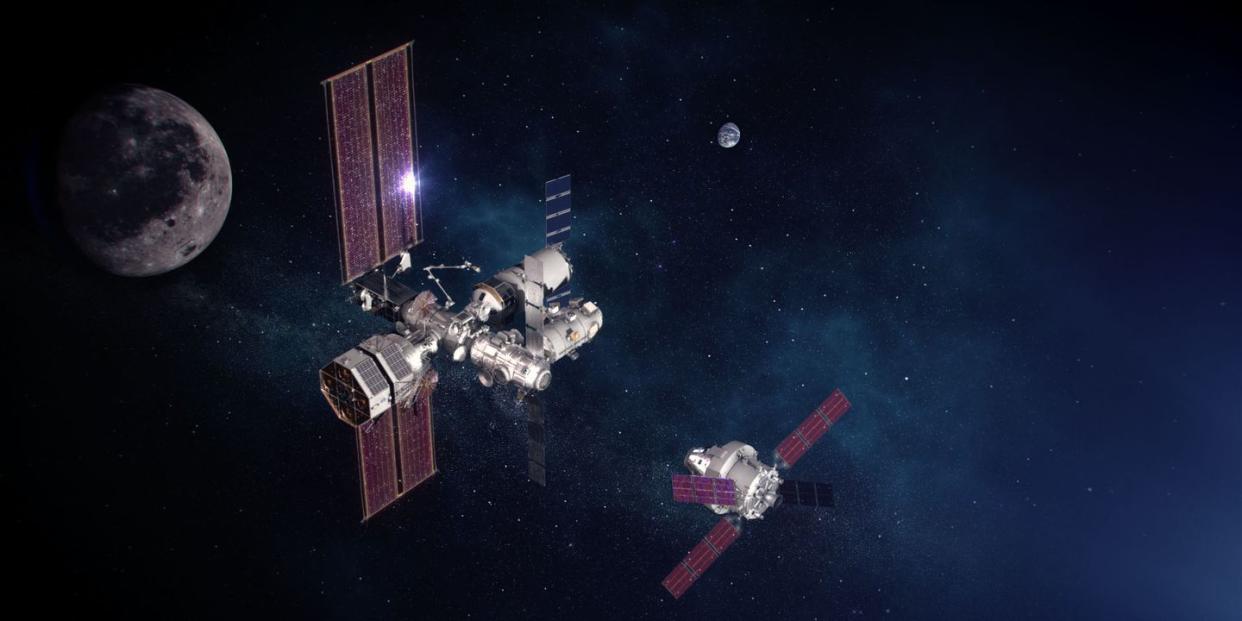Japan Could Become the Second Country to Put Boots on the Moon

- Oops!Something went wrong.Please try again later.
The U.S. and Japan plan to partner closely on NASA’s Artemis mission to the moon, according to a statement from the agency.
Japan could become the second country to send an astronaut to the lunar surface.
Part of the Artemis program, NASA’s long-awaited successor to the Apollo mission includes an orbital outpost and on-moon base.
Japan wants in on NASA’s Artemis program, which is aiming to return Americans to the surface of the moon in the next decade. While Japan Aerospace Exploration Agency (JAXA) has long voiced its support for the program, the move could lead to a Japanese astronaut setting foot on the lunar surface in the coming years. If that happens, Japan will become the second nation to place a person on the moon.
🪐 For more great space coverage, get unlimited access to Pop Mech Pro—starting NOW.
A report from Kyodo News ahead of President Joe Biden’s visit to Tokyo to meet Japanese Prime Minister Fumio Kishida on Monday revealed the two leaders would announce a “shared ambition” to see Japan join the Artemis program, visit the lunar Gateway (a planned outpost set to orbit the moon), and land a Japanese astronaut on the lunar surface sometime in the second half of this decade.
NASA confirmed the news this week in a statement following the President’s trip to Tokyo. “I’m excited about the work we’ll do together on the Gateway station around the Moon and look forward to the first Japanese astronaut joining us in the mission to the lunar surface under the Artemis program,” Biden says in the statement. The two countries and their space agencies are still hashing out the details and will finalize the deal in an upcoming Implementing Arrangement.
In 2017, NASA debuted the Artemis program, aiming to land the first woman and first person of color on the moon “using innovative technologies to explore more of the lunar surface than ever before.” The agency last sent astronauts to the moon in December 1972 during the Apollo 17 mission. (From 1969 to 1972, the Apollo program sent 12 astronauts to the moon.) Now 50 years later, NASA says it will collaborate with commercial and international partners to establish the “first long-term presence on the moon” and then use those learnings to help send astronauts to Mars.
Japan is poised to fill that international partner role. In October, 2019, Japan’s space agency, JAXA, announced it would join the United Kingdom, United Arab Emirates, Canada, Australia, Italy, and others in signing and supporting the Artemis Accords. (It officially signed the accord in 2020.) Colombia is the latest and 19th country to have signed onto the accords.
The Artemis Accords have set in motion another space rivalry for the United States—this time not only with Russia, but China, too. Now, though, the U.S. has the help of countries across multiple continents.
“We’re going back to the moon for scientific discovery, economic benefits and inspiration for a new generation of explorers: the Artemis Generation,” the agency states on the Artemis Program website. “While maintaining American leadership in exploration, we will build a global alliance and explore deep space for the benefit of all.”
The first leg of the mission, Artemis I, is scheduled to launch sometime later this year and will feature an uncrewed flight test of the Orion capsule and SLS rocket. The capsule will travel 280,000 miles from Earth, thousands of miles beyond the moon, and spend up to six weeks in space before returning home.
The ten-day Artemis II mission, slated to launch in May 2024, will ferry a crew of astronauts around the moon and then back to Earth. It’ll be the first time since the last Apollo mission that humans have left low-Earth orbit. The third Artemis mission, scheduled for as soon as 2025, will send a crewed capsule to dock with the lunar Gateway orbiter, which will serve as an international hub for lunar exploration. (Japan is planning to supply one of the outpost’s modules.) From there, a pair of astronauts will attempt to land on the moon’s south pole.
Japan also has plans to send its very own lander, part of the Smart Lander for Investigating the Moon (SLIM), to the lunar surface in 2023.
You Might Also Like

